Enhanced Nogo-P3 amplitudes of mothers compared with non-mother women during an emotional Go/Nogo task
- PMID: 29609641
- PMCID: PMC5879812
- DOI: 10.1186/s40101-018-0167-9
Enhanced Nogo-P3 amplitudes of mothers compared with non-mother women during an emotional Go/Nogo task
Abstract
Background: It is known that emotion regulatory responses of humans are changed by the experiences they have, but in particular, they are changed by becoming a mother. A recent study has found how a woman's emotion regulatory response to a child's crying changes after becoming a mother. However, mothers' emotion regulatory responses other than those to children and the association between emotion regulatory response and parental stress are still unknown.
Methods: Eighteen healthy Japanese females (nine mothers and nine non-mothers) participated in the experiment. They performed an emotional Go/Nogo task, with facial expressions of others (angry, happy, and neutral faces) used as emotional stimuli. The percentage of correct responses, response time, and event-related potentials (ERPs) during the task was measured.
Results: This comparison revealed that the mother group had a larger P3 (Nogo-P3) amplitude than the non-mother group when Nogo trials were held. This indicates that in mothers, there was greater activation of the behavioral inhibition-related brain areas than in non-mother women when they inhibited inappropriate behavior following recognition of facial expressions of others. In addition, in the mother group, there was a negative correlation between parental stress levels and Nogo-P3 amplitudes evoked by angry faces. This suggests that there is a relation between the level of parental stress of mothers and their emotion regulatory responses to angry faces.
Conclusions: Our results demonstrate that mothers' emotion regulatory processes may differ from those of non-mothers in response, not only to a child's crying but also to expressions of emotions by others, and also suggest that the inhibitory recognition activity of mothers can be affected by parental stress.
Keywords: Behavioral inhibition; Emotion regulation; Event-related potentials (ERPs); Mothers; Nogo-P3; Parental stress.
Conflict of interest statement
Ethics approval and consent to participate
The present study was performed according to the protocol that was approved by the Ethics Committee of Kyushu University (Approval No. 260). All the subjects of this study gave their written informed consent to participate in this study.
Consent for publication
Not applicable.
Competing interests
The authors declare that they have no competing interests.
Publisher’s Note
Springer Nature remains neutral with regard to jurisdictional claims in published maps and institutional affiliations.
Figures
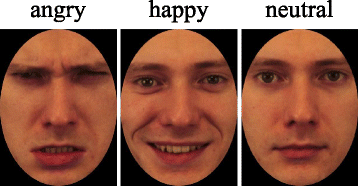
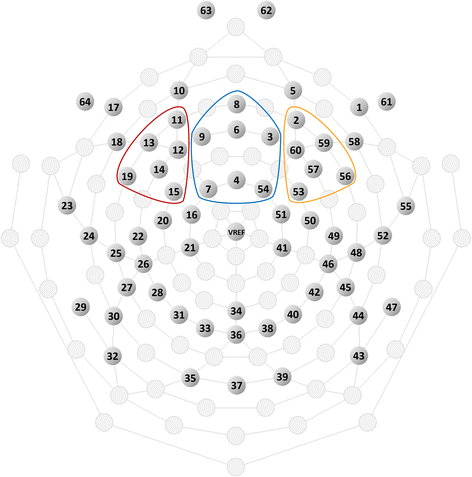
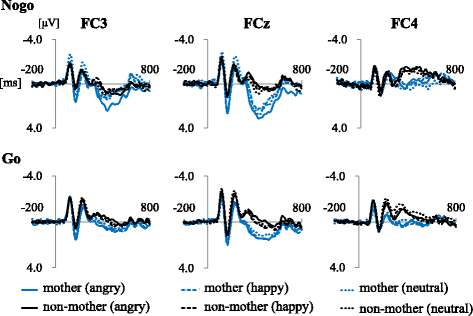
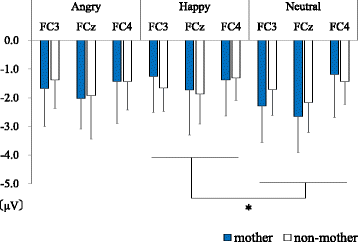
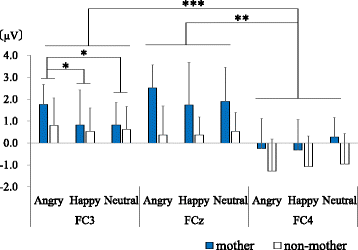
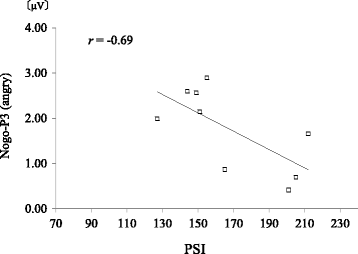
Similar articles
-
Time course of automatic emotion regulation during a facial Go/Nogo task.Biol Psychol. 2012 Feb;89(2):444-9. doi: 10.1016/j.biopsycho.2011.12.011. Epub 2011 Dec 23. Biol Psychol. 2012. PMID: 22200654
-
The time course of social-emotional processing in early childhood: ERP responses to facial affect and personal familiarity in a Go-Nogo task.Neuropsychologia. 2008 Jan 31;46(2):595-613. doi: 10.1016/j.neuropsychologia.2007.10.011. Epub 2007 Oct 23. Neuropsychologia. 2008. PMID: 18061633
-
Automatic emotion regulation in response inhibition: The temporal dynamics of emotion counter-regulation during a go/no-go task.Psychophysiology. 2016 Dec;53(12):1909-1917. doi: 10.1111/psyp.12754. Epub 2016 Aug 27. Psychophysiology. 2016. PMID: 27565763
-
Emotional bias varies with stimulus type, arousal and task setting: Meta-analytic evidences.Neurosci Biobehav Rev. 2019 Dec;107:461-472. doi: 10.1016/j.neubiorev.2019.09.035. Epub 2019 Sep 23. Neurosci Biobehav Rev. 2019. PMID: 31557549 Review.
-
Just Swap Out of Negative Vibes? Rumination and Inhibition Deficits in Major Depressive Disorder: Data from Event-Related Potentials Studies.Front Psychol. 2016 Jul 28;7:1019. doi: 10.3389/fpsyg.2016.01019. eCollection 2016. Front Psychol. 2016. PMID: 27516743 Free PMC article. Review.
Cited by
-
Motherhood and theory of mind: increased activation in the posterior cingulate cortex and insulae.Soc Cogn Affect Neurosci. 2022 May 5;17(5):470-481. doi: 10.1093/scan/nsab109. Soc Cogn Affect Neurosci. 2022. PMID: 34592763 Free PMC article.
-
Brain Responses to Emotional Infant Faces in New Mothers and Nulliparous Women.Sci Rep. 2020 Jun 12;10(1):9560. doi: 10.1038/s41598-020-66511-x. Sci Rep. 2020. PMID: 32533113 Free PMC article.
-
Increased activation in the bilateral anterior insulae in response to others in pain in mothers compared to non-mothers.Sci Rep. 2021 Nov 23;11(1):22757. doi: 10.1038/s41598-021-02162-w. Sci Rep. 2021. PMID: 34815443 Free PMC article.
-
ERP study on the associations of peripheral oxytocin and prolactin with inhibitory processes involving emotional distraction.J Physiol Anthropol. 2019 May 17;38(1):5. doi: 10.1186/s40101-019-0196-z. J Physiol Anthropol. 2019. PMID: 31101072 Free PMC article.
References
-
- Kikuchi Y, Noriuchi M. Emotional engineering volume 4. In: Fukuda S, editor. Emot. Eng. Vol. 4. Springer International Publishing; 2016. p. 189–198.
MeSH terms
LinkOut - more resources
Full Text Sources
Other Literature Sources

